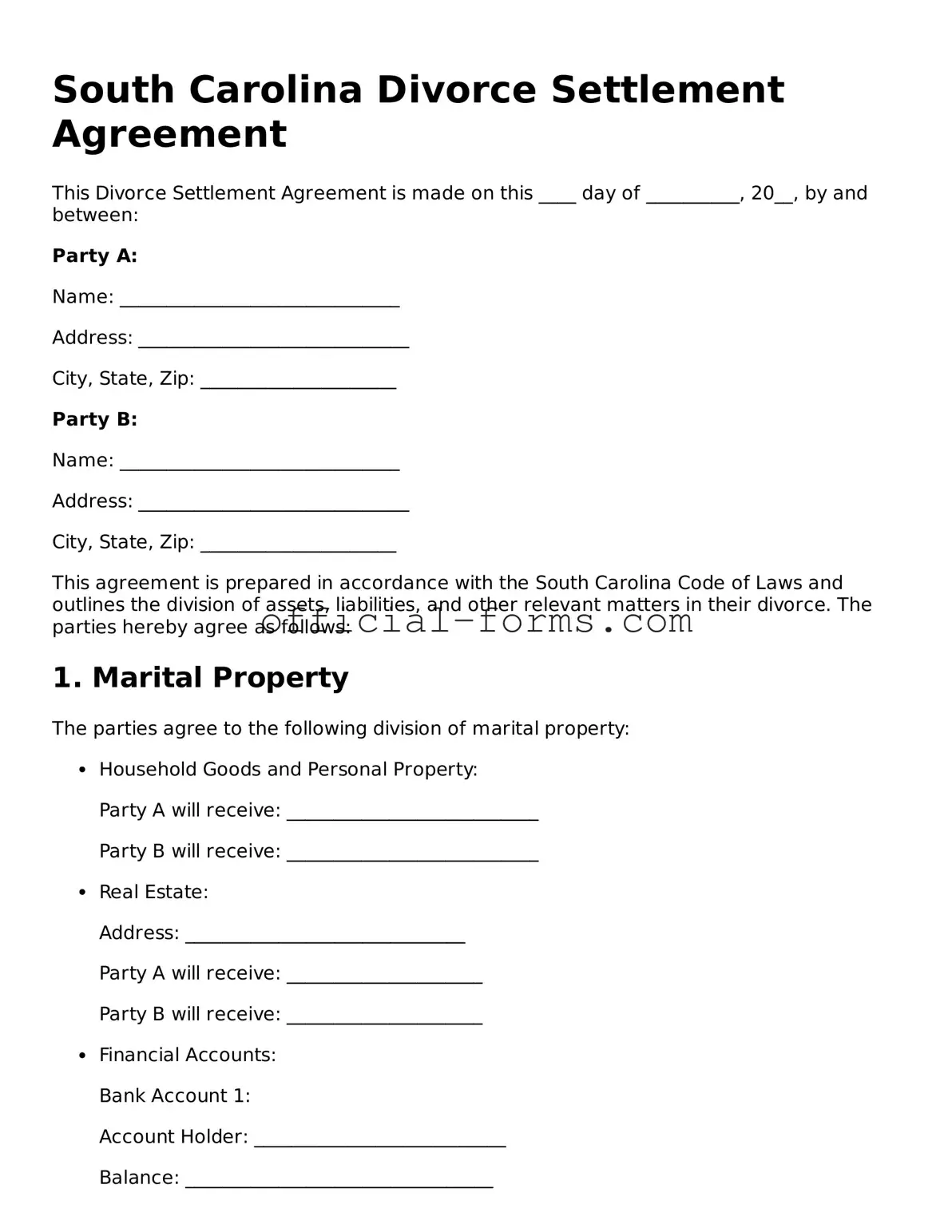Divorce can be a challenging and emotionally taxing process, often complicated by the need to reach agreements on various aspects of life after marriage. In South Carolina, the Divorce Settlement Agreement form serves as a crucial tool for couples navigating this transition. This form outlines the terms of the divorce, addressing key issues such as property division, child custody, and spousal support. By detailing how assets and debts will be divided, the agreement helps to minimize disputes and provides a clear roadmap for both parties moving forward. Additionally, it includes provisions for child support and visitation rights, ensuring that the best interests of any children involved are prioritized. Completing this form accurately and comprehensively can facilitate a smoother divorce process and lay the groundwork for future cooperation between ex-spouses. Understanding the components of the Divorce Settlement Agreement form is essential for anyone considering or going through a divorce in South Carolina, as it not only impacts immediate arrangements but also influences long-term outcomes.
